Newer models don’t have class or a personality: Nadia Hussain, Deepak Perwani on ‘better’ days
The duo made an appearance on ‘Time Out with Ahsan Khan’
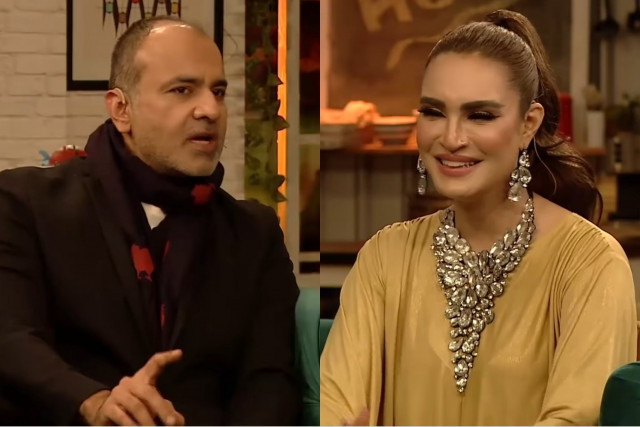
Model Nadia Hussain and fashion designer Deepak Perwani recently made an appearance on Time Out with Ahsan Khan. The duo reminisced about the old days, airing their grievances with the way things are done today in the fashion industry. Both have been active on the fashion scene since the early 2000s, with the two also having dabbled in acting every now and then.
Speaking about her entry into the world of fashion, Nadia shared, “I did my first shoot with Deepak, but I had already been introduced. I had done another show by that time.”
After being asked what it was he saw in Nadia, Deepak explained that “she had the height and the face”. Elaborating on their first collaboration, Deepak recalled, “The photographer was Tapu Javeri. We went to the beach for the shoot, and her mother had given us very strict instructions that the clothes shouldn’t be the kind that would lead her to hurl her shoe at us.”
He continued, “It was a creative shoot, and there was a dress that we put Nadia in that was a little short. It wasn’t about the dress, but the shot was so beautiful that we ended up printing it. I told Tapu not to print it, it was for the cover of the annual Herald I think, but Tapu said the shot was beautiful and artistic, so it ended up getting printed. Two days later, her mother showed up at my store to tell me off… Then Nadia became a superstar overnight.”
Nadia later explained that she personally doesn't prefer revealing clothes, sharing, “I have always been the type who would never willingly wear revealing clothes. But, several times, you’re nudged in that direction.”
Interjecting, Deepak clarified that the early 2000s were a different time. He stated, “It was a different time. There was a creative aspect involved. There weren’t that many clothes and I was doing more edgy designs. It was a movement, and everyone wanted to be a part of it and enjoy those clothes and that silhouette.”
He continued, sharing his opinion on how the shift away from more Western silhouettes is a downgrade, “At the time, we didn’t have this social media bullshit where people start commenting on everything… 30 years down the line, I should be making even more progressive clothes than what I was making then. Now, I make everything full sleeves because that’s the only thing that sells. In 1994, we’d sell only Western cuts. So, the market hasn’t progressed, it has regressed.”
After the host suggested that there may be a need to cater to cultural sensitivities, Nadia retorted, “That’s something else. That’s the moral brigade… Please, keep fashion and religion separate.” Deepak added, “If they haven’t seen the world, how is that our fault? They’re sitting at home on their computers. Go out, see the world and then judge.”
Later on in the chat, Nadia asserted how the old lot of fashion models were objectively better by virtue of the girls coming from “educated” backgrounds. Taking issue with the more open and accepting market of today, Nadia lamented, “The best was that back then, 70 to 80 percent of the models were from educated backgrounds. Everyone had a similar aspiration. That lot, it really was the best time. Afterwards, all kinds of girls became a part of the profession. Not even the council members cared if they were uneducated or didn’t have the height. There were no criteria, it was only about whether they could get permission. Where else are you going to get 40 models at once? Back in our day, we’d gather 20 girls for one show… [The new models] weren’t educated. They didn’t have class or a personality.”
Reflecting on how he made his name in the fashion world, Deepak explained that it started off out of sheer boredom. While the designer was visiting from New York in 1994, he made a few shirts to earn some “pocket money”, with the shirts selling out instantly. Referring to himself as the “Accidental Designer”, Deepak explained, “There was nothing there at the time. There was no Zamzama… Now, in my opinion, there are a lot of great designers. The hard work we put into fashion weeks and retail, and the designer markets that we allowed to come together to form a market, retail is now thriving. Look at the number of malls we have. We didn’t have the concept of a mall in our time, only stores. That was also a huge deal, to go to a store to shop… Times have changed.”
Speaking about how the risks the designers at the time took paid off, Deepak added, “When we did our first fashion week, a designer said to me, ‘Why are we creating competition for ourselves?’ I told them we aren’t creating competition, we’re creating an industry for the future… It started a job creation movement.”


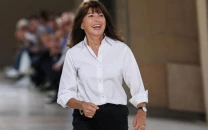
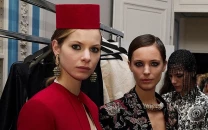
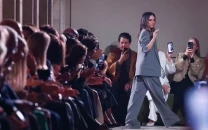

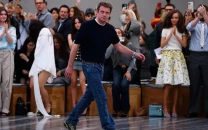











COMMENTS
Comments are moderated and generally will be posted if they are on-topic and not abusive.
For more information, please see our Comments FAQ